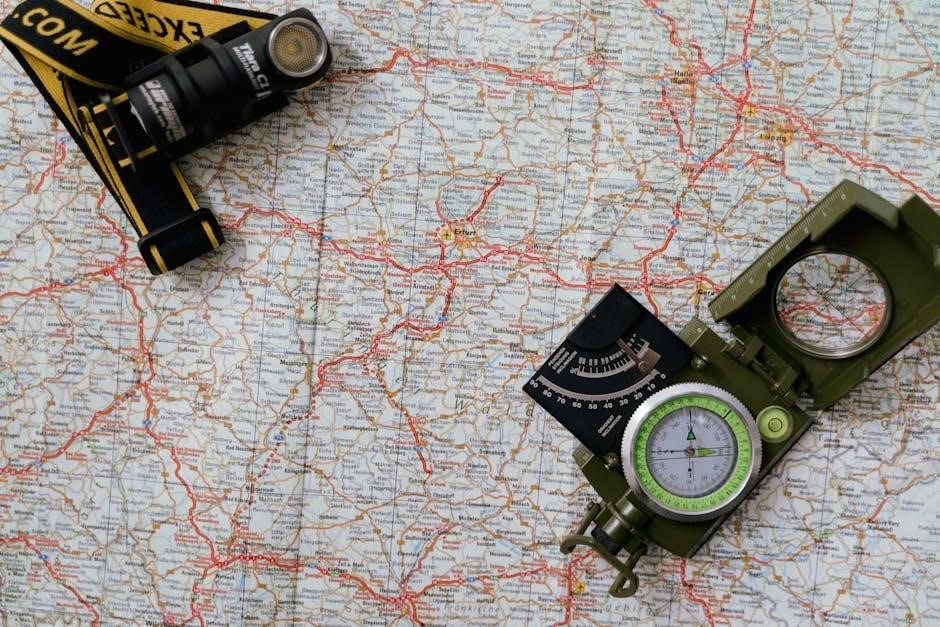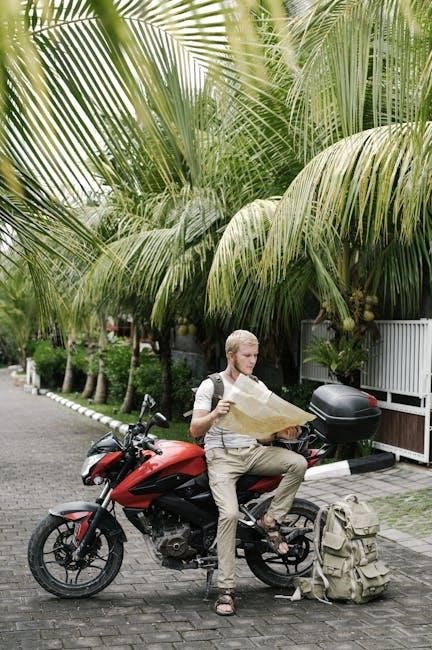Welcome to the ultimate backpack size guide! Choosing the right backpack size can be confusing, but this guide simplifies the process. Learn how to measure, fit, and select the perfect backpack for your needs, ensuring comfort and functionality for any adventure or daily use.
Understanding Backpack Sizes and Volumes
Backpack sizes are typically measured in liters (L), indicating the total volume of the bag. The capacity determines how much gear you can carry, making it essential to choose the right size for your needs. Small backpacks (under 19L) are ideal for daily essentials, while medium backpacks (20-35L) offer more space for travel or work. Large backpacks (36-50L) are perfect for multi-day trips, and extra-large backpacks (50L+) are designed for extended adventures or heavy packing. Understanding these volumes helps you avoid overpacking and ensures your backpack remains comfortable and functional. Whether for hiking, school, or travel, selecting the right size ensures efficiency and comfort, making your adventures more enjoyable.

Why Choosing the Right Backpack Size Matters
Selecting the appropriate backpack size is crucial for comfort and efficiency. A bag that’s too small may not hold all your essentials, while one that’s too large can be cumbersome and uncomfortable. Proper sizing ensures even weight distribution, reducing strain on your back and shoulders. For travelers, the right size often means compliance with carry-on restrictions, saving time and avoiding extra fees. In outdoor adventures, a well-fitted backpack enhances mobility and balance. Additionally, the right size prevents overpacking, helping you stay organized and focused on your activities. Whether for daily use, hiking, or travel, choosing the correct backpack size significantly impacts your overall experience, making it a decision worth careful consideration.

Backpack Size Categories
Backpacks are categorized into four main size groups: Small (under 19L), Medium (20-35L), Large (36-50L), and Extra-Large (50L+). Each category suits different needs and activities perfectly.
Small Backpacks (Under 19L)
Small backpacks are ideal for short trips, daily commutes, or minimalists. With capacities under 19 liters, they offer just enough space for essentials like a laptop, water bottle, and snacks. These compact designs are lightweight and perfect for carrying the bare necessities without feeling bulky. They are popular among students, urban explorers, and those who prefer a streamlined look. Some models even feature sleek designs suitable for professional settings. Despite their small size, many include organizational features like compartments and pockets to keep items tidy. If you’re looking for convenience and portability, a small backpack is an excellent choice for everyday use or casual outings.
Medium Backpacks (20-35L)
Medium backpacks, ranging from 20 to 35 liters, are a versatile choice for everyday use and short trips. They strike a perfect balance between capacity and portability, making them ideal for school, work, or weekend getaways. These backpacks can comfortably hold a laptop, books, a change of clothes, and other essentials while remaining lightweight. Their mid-size design ensures they are not too bulky, allowing for easy maneuverability in crowded spaces. Many medium backpacks feature multiple compartments and pockets for organization, as well as padded straps for comfort during extended wear. Whether you’re heading to class, the office, or a short adventure, a 20-35L backpack offers practicality and style, catering to a wide range of needs without sacrificing functionality.
Large Backpacks (36-50L)
Large backpacks, with capacities between 36 and 50 liters, are designed for extended trips, hiking excursions, or carrying bulky items. These backpacks are ideal for multi-day adventures, offering ample space for clothing, gear, and supplies. They often feature reinforced frames and sturdy materials to handle heavier loads, making them durable and reliable for outdoor use. Many large backpacks include multiple compartments, pockets, and hydration sleeves for organization and convenience. Their larger size accommodates sleeping bags, tents, and other camping essentials, while padded straps and back panels enhance comfort during long treks. Whether you’re embarking on a week-long hike or a extended travel journey, a 36-50L backpack provides the storage and support needed for a comfortable and well-organized trip.

Extra-Large Backpacks (50L+)
Extra-large backpacks, with capacities of 50 liters or more, are designed for extended adventures, such as week-long expeditions or international travel. These backpacks are ideal for carrying bulky gear, camping equipment, or multiple outfits for long trips. They often feature durable materials, weather-resistant coatings, and reinforced frames to handle heavy loads. Many 50L+ backpacks include multiple compartments, pockets, and attachment points for organization and versatility. Padded straps and back panels ensure comfort during long treks. While they are larger, high-quality designs maintain a balanced fit, making them suitable for hiking, camping, or even as checked luggage. If you need ample space for gear and don’t mind the extra weight, an extra-large backpack is a practical choice for serious adventurers or travelers with extensive packing needs.

Measuring Backpack Size
Measuring backpack size involves determining torso length, hip fit, and backpack dimensions. Accurate measurements ensure optimal comfort and load distribution for various activities and trips.
How to Measure Torso Length for Backpack Fitting
Measuring your torso length is crucial for proper backpack fitting. Start by locating the C7 vertebra at the base of your neck. Place your fingers on the highest point of your hip bones to find the iliac crest. Using a flexible tape measure, run it vertically from the C7 down to the top of the iliac crest. This measurement determines your torso length, which backpack manufacturers use to ensure a comfortable fit. A correctly fitted backpack distributes weight evenly, reducing strain and improving mobility. Many backpacks offer adjustable torso lengths, but knowing your exact measurement helps in selecting the right size for optimal performance and comfort during hikes or travels.
Understanding Backpack Dimensions (Length x Width x Height)
Backpack dimensions, measured in length, width, and height, play a key role in determining its size and functionality. These measurements help users assess whether the backpack fits their needs, such as carry-on luggage requirements or storage capacity. For example, a backpack with dimensions like 22x14x8 inches is ideal for airline carry-ons, while larger dimensions suit hiking or travel. The length often refers to the backpack’s height when worn, while the width and height indicate its depth and vertical space. Understanding these dimensions ensures proper fit and usability, whether for daily use or outdoor adventures. Always check the specific requirements for your intended use, such as airline size limits or hiking gear needs, to choose the right backpack dimensions for your lifestyle.

Choosing the Right Backpack for Specific Needs
Selecting the right backpack involves matching its size and features to your lifestyle and activities, ensuring optimal comfort and functionality for travel, hiking, or daily use.
Backpack Sizes for Travel and Hiking
When it comes to travel and hiking, backpack size is crucial for comfort and practicality. For short trips or day hikes, a 25-30L backpack is ideal, offering enough space for essentials like water, snacks, and extra layers. For multi-day adventures, consider a 35-45L backpack, which can hold camping gear, clothing, and supplies. Larger trips or expeditions may require 50L or more, providing ample room for bulky items like sleeping bags and tents. A 55L backpack is often recommended for its versatility, accommodating both weekend getaways and extended journeys. Always check airline carry-on dimensions if flying, with typical sizes around 22x14x8 inches. Ensure the backpack fits your torso length for optimal comfort, and prioritize features like durability, weather resistance, and multiple compartments for organization.
Backpack Sizes for School and Daily Use
Choosing the right backpack size for school or daily use is essential for comfort and practicality. For most students, a backpack between 20-35L is ideal, offering ample space for books, laptops, and essentials without being overly bulky. Smaller backpacks (under 19L) are perfect for younger students or those with lighter loads. When selecting a size, consider the length of your school day and the items you typically carry. Features like multiple compartments, padded laptop sleeves, and durable materials are key for organization and longevity. Ensure the backpack fits comfortably, with padded shoulder straps and a chest strap for added support. Stylish designs and color options also make it easy to match your personal style. Opting for a well-fitted backpack can prevent strain and make daily routines more enjoyable.

Popular Backpack Sizes and Recommendations
Popular backpack sizes range from 25-30L for shorter trips to 30-45L for extended adventures. A 55L backpack is often recommended for its versatility in accommodating both weekend and multi-day trips.
Best Backpack Sizes for Carry-On Luggage
For carry-on luggage, backpack sizes typically range between 18x14x8 inches to 22x14x9 inches, adhering to most airline size restrictions. A backpack with dimensions under 22 inches in height, 14 inches in width, and 9 inches in depth is ideal. However, always check your airline’s specific carry-on size limits, as they can vary. Opting for a slightly larger backpack, such as 25-30 liters, can be suitable for longer trips while still fitting in overhead compartments. Look for lightweight, compressible designs to maximize space and ensure easy stowage. Adjustable torso straps and padded shoulder straps enhance comfort during travel. A 55-liter backpack is often recommended for its versatility in accommodating both weekend and multi-day trips. Remember, compactness and fit are key to meeting carry-on requirements. Choose wisely to ensure your backpack meets size guidelines and fits seamlessly in the overhead bin.
